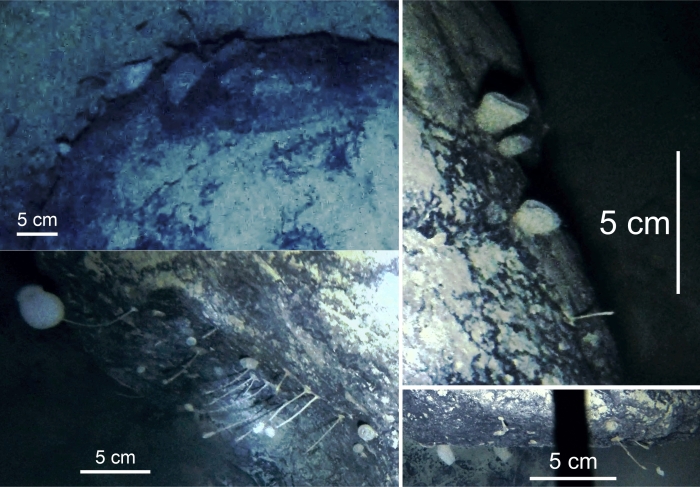
The waters below Antarctica are amongst the most inhospitable environments on our planet – or so we thought.
It’s pitch dark, and temperatures are subzero; yet, when scientists drilled through an Antarctic ice shelf far from light or warmth, they found a seafloor boulder that’s home to several species we may have never seen before.
A few of the organisms have been seen in similar locations, but this discovery marks the first time stationary creatures that live their lives attached to one place, such as sponges, have been found in this hostile environment.
“This discovery is one of those fortunate accidents that pushes ideas in a different direction and shows us that Antarctic marine life is incredibly special and amazingly adapted to a frozen world,” said biogeographer Huw Griffiths of the British Antarctic Survey.

The Antarctic ice shelves are permanent, floating rafts connected to the main landmass of the Antarctic continent, and they can be absolutely huge. In all, they constitute over 1.5 million square kilometres – about a third of the Antarctic continental shelf.
Because of how unwelcoming the environment below them is, and how hard it is to get to, we’ve explored very little of it. Generally, scientists bore holes in the ice and lower equipment down to take a gander at what’s down there.
From eight of these borehole surveys, we know that there is life under the ice, usually in the form of small mobile creatures such as fish, jellies, worms, and crustaceans. Filter feeders such as sponges were highly unexpected here, so far from regions where photosynthesis is possible.
But below the Filchner Ice Shelf – 260 kilometres (160 miles) from the ice shelf front, under 890 metres of ice, at a seafloor depth of 1,233 metres – that’s exactly what Griffiths and his colleagues found. Attached to the rock, they found one sponge on a stalk, 15 more sponges without stalks, and 22 unidentified stalked organisms that could be sponges, ascidians, hydroids, barnacles, cnidaria, or polychaetes.
“Our discovery raises so many more questions than it answers, such as how did they get there?” Griffiths said.
“What are they eating? How long have they been there? How common are these boulders covered in life? Are these the same species as we see outside the ice shelf or are they new species? And what would happen to these communities if the ice shelf collapsed?”

Most life on Earth relies on the Sun for survival. Photosynthesis is at the very bottom of the food chain, with organisms such as plants and algae using sunlight to make sugars, and other organisms eating either plants or the organisms that eat plants (or the organisms that eat the organisms that eat plants, and so on).
But in the dark depths where no sunlight ever reaches, living things use a different strategy. Around ocean thermal vents that blast out heat and volcanic chemicals, bacteria rely on chemosynthesis to make sugars, forming the basis of a similar food chain. A chemosynthetic ecosystem has also been discovered in a cave in Romania.
Recent research has found that organisms living under glaciers chemosynthesise hydrogen. Chemosynthetic ecosystems that rely on methane have been found in the ocean, too; a methane leak has even been found in Antarctic waters.
The boulder investigated by Griffiths and his team is estimated to be between 625 and 1,500 kilometres from the nearest region of photosynthesis. So it seems likely that the things living there rely on some form of chemosynthetic food chain, even if the sponges are the carnivorous kind (which is yet to be determined).
The only way to find that out is by doing a much more detailed study of the organisms and their environment. And that is an extremely challenging prospect.
“To answer our questions we will have to find a way of getting up close with these animals and their environment – and that’s under 900 metres of ice, 260 kilometres away from the ships where our labs are,” Griffiths said.
“This means that as polar scientists, we are going to have to find new and innovative ways to study them and answer all the new questions we have.”
The research has been published in Frontiers in Marine Science, Science Alert and Wired
Now subscribe to this blog to get more amazing news curated just for you right in your inbox on a daily basis (here an example of our new newsletter).
You can also follow us on Facebook and/ or Twitter. And, by the way you can also make a donation through Paypal. Thank you!













This means that as polar scientists, we are going to have to find new and innovative ways to study them and answer all the new questions we have.
Still, it’s remarkable. Makes life on other planets with methane perhaps more likely. More study in Antarctica. Very mysterious how we rarely here much news from Antarctica. Probably all kinds of secrets.